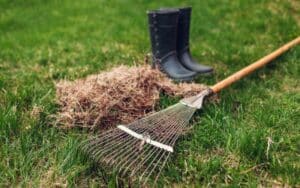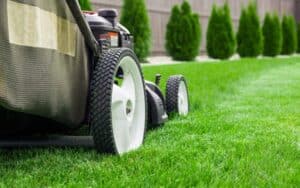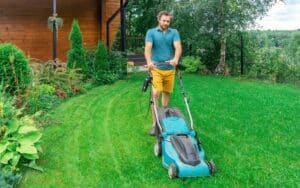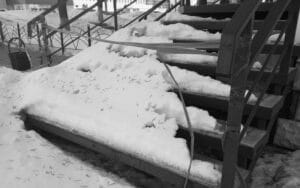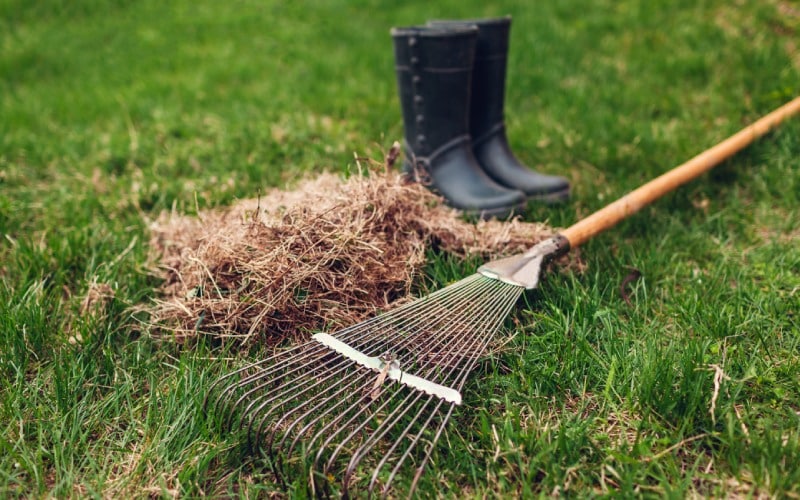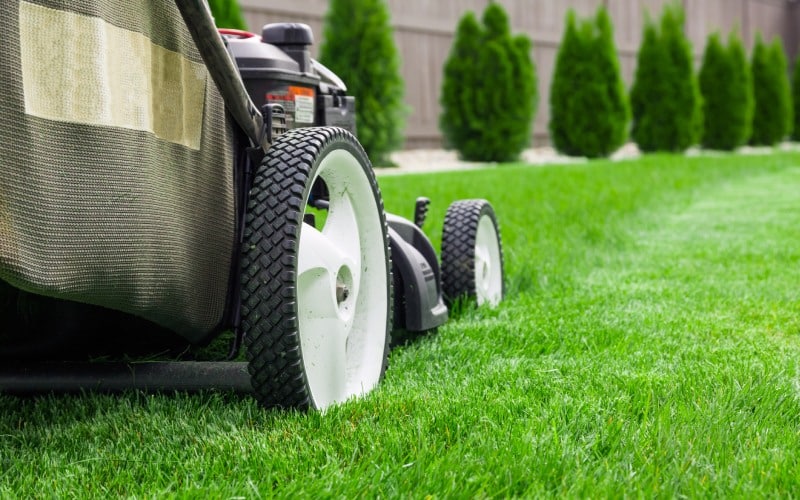Thatch can be a common issue for Guelph lawns, affecting both the health and appearance of your landscape. In this article, we will discuss what thatch is, how to prevent it, and the best practices for removing it from your lawn.
What is Thatch?
Thatch is a layer of dead and living plant material, including grass clippings, roots, and stems, that accumulates between the soil surface and the green grass blades. While a small amount of thatch can be beneficial for your lawn, excessive thatch can create a barrier that prevents water, air, and nutrients from reaching the soil, leading to a less healthy lawn

Preventing Thatch Buildup in Your Guelph Lawn
To prevent excessive thatch buildup, follow these lawn care practices:
- Avoid overwatering and over-fertilizing, which can contribute to excessive thatch.
- Mow your lawn regularly at the recommended height for your grass type, and avoid removing more than one-third of the grass blade at a time.
- Aerate your lawn annually to promote healthy root growth and breakdown of organic matter.
Removing Thatch from Your Guelph Lawn
If your lawn has excessive thatch buildup, follow these thatch removal steps to remove it:
- Use a thatch rake or a power dethatcher to remove the thatch layer. A thatch rake is suitable for small areas, while a power dethatcher is more efficient for larger lawns.
- Rake up and remove the loosened thatch debris from the lawn.
- Aerate the lawn to improve soil structure and encourage the breakdown of remaining organic matter.
- Water and fertilize your lawn to support recovery and healthy growth.

Conclusion
By understanding what causes thatch buildup and taking steps to prevent and remove it, you can maintain a healthy and vibrant Guelph lawn. Regular lawn care practices, such as proper watering, mowing, and aeration, are essential for keeping thatch under control and promoting a thriving outdoor space.
FAQs on Thatch in Your Guelph Lawn

How do I know if my lawn has a thatch problem?
If your lawn feels spongy or springy when you walk on it, or if you notice a thick layer of dead plant material between the green grass blades and the soil, you may have a thatch issue. Measure the thatch layer – if it is more than 1/2 inch thick, it’s time to dethatch your lawn.
Can I use a regular rake to remove thatch?
While a regular leaf rake may help remove some surface debris, it is not as effective as a thatch rake or power dethatcher for removing the compact layer of thatch. Using the right tools will ensure better results and a healthier lawn.
When is the best time to dethatch my lawn?
The best time to dethatch your Guelph lawn is during the early fall or spring when the grass is actively growing and can recover quickly from the process. Avoid dethatching during periods of extreme heat or drought, as this can stress the lawn and hinder recovery.







